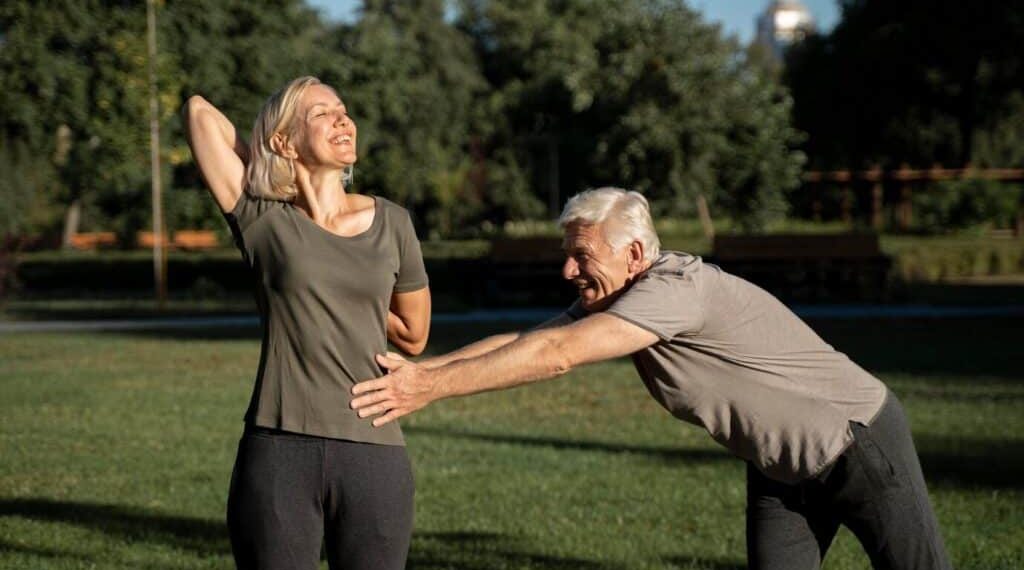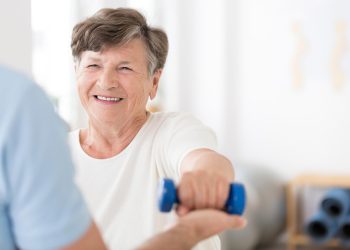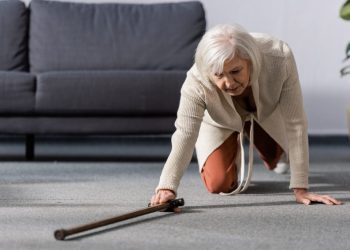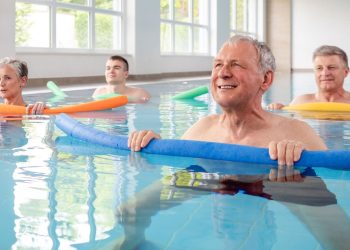Growing older is not about slowing down—it’s about moving forward with intention, strength, and grace. The narrative around aging is shifting, and at the heart of this transformation is a powerful truth: how we age is profoundly influenced by how we move. Active aging isn’t just about adding years to your life; it’s about adding life to your years through purposeful physical activity that nurtures your body, sharpens your mind, and enriches your spirit.
The Power of Movement at Any Age
Your body is remarkably adaptable, possessing an extraordinary capacity to grow stronger, more flexible, and more resilient regardless of your starting point or current age. Research consistently shows that regular exercise can turn back the clock on many aspects of physical decline previously attributed solely to aging. The encouraging news? It’s never too late to begin.
Exercise serves as a cornerstone of healthy aging, influencing everything from bone density and muscle mass to cognitive function and emotional wellbeing. When you engage in regular physical activity, you’re not simply going through motions—you’re investing in your independence, reducing your risk of chronic diseases, enhancing your balance to prevent falls, boosting your energy levels, and cultivating the physical freedom to pursue the activities and experiences that bring you joy.
The difference between merely surviving and truly thriving in your later years often comes down to maintaining functional fitness—the ability to perform everyday activities with ease and confidence. Whether it’s playing with grandchildren, traveling to new destinations, gardening, dancing, or simply maintaining your home, exercise provides the foundation for living life on your own terms.
Building Strength: The Foundation of Independence
Strength training stands as perhaps the most transformative exercise approach for older adults, yet it remains underutilized. As we age, we naturally lose muscle mass in a process called sarcopenia, which can begin as early as our thirties and accelerates after sixty. However, this loss is not inevitable—resistance training can slow, stop, and even reverse this decline.
Strength exercises encompass any activity that challenges your muscles to work against resistance. This might include lifting weights, using resistance bands, performing bodyweight exercises, or even carrying groceries. The beauty of strength training lies in its scalability; you can start exactly where you are and progress at your own pace.
Begin with fundamental movements that mirror daily activities. Sit-to-stand exercises from a chair build the leg strength necessary for getting up from sofas, toilet seats, and car seats without assistance. Wall push-ups develop upper body strength for tasks like pushing shopping carts or opening heavy doors. Bicep curls with light dumbbells or even soup cans help maintain the arm strength needed for carrying items and lifting grandchildren.
The benefits extend far beyond muscle mass. Strength training increases bone density, providing crucial protection against osteoporosis and fractures. It improves metabolism, helping maintain a healthy weight. It enhances joint stability, reducing pain from conditions like arthritis. Perhaps most importantly, it builds confidence—there’s profound empowerment in feeling physically capable and strong.
Aim for strength training exercises two to three times per week, allowing rest days between sessions for muscle recovery. Start with one set of ten to fifteen repetitions per exercise, gradually increasing as you grow stronger. Remember, proper form trumps heavy weight every time. Quality movement protects your joints and maximizes benefits.
Balance: Your Shield Against Falls
Falls represent one of the greatest threats to independence in older age, but excellent balance training can dramatically reduce this risk. Balance is a complex skill involving your muscles, joints, eyes, inner ear, and nervous system working in harmony. Like any skill, it improves with practice.
Balance exercises can be seamlessly woven into your daily routine. Simple single-leg stands while brushing your teeth or waiting for the kettle to boil provide valuable practice. Heel-to-toe walking, where you place one foot directly in front of the other as if walking a tightrope, challenges your stability in a controlled way. Standing on one foot while maintaining good posture—perhaps holding onto a counter initially and progressing to hands-free—builds the foundational balance needed for navigating uneven surfaces.
Tai chi deserves special mention as an exceptional balance-building practice. This gentle martial art emphasizes slow, flowing movements and weight shifts that profoundly enhance stability, coordination, and body awareness. Studies consistently demonstrate that regular tai chi practice significantly reduces fall risk while also providing stress relief and social connection.
Yoga offers similar benefits, combining balance challenges with flexibility and mindfulness. Many yoga poses, from tree pose to warrior variations, require sustained balance while building strength and mental focus. The practice teaches you to find stability within movement—an invaluable skill for preventing falls in real-world situations.
Dedicate time to balance training at least three times weekly, and consider it just as essential as cardiovascular or strength work. The confidence that comes from improved balance transforms how you move through the world, whether you’re navigating stairs, walking on slippery surfaces, or simply moving around your home.
Flexibility and Mobility: Freedom of Movement
Flexibility and mobility work often feels like the Cinderella of exercise programs—underappreciated until you realize how profoundly it affects your quality of life. Maintaining range of motion in your joints and elasticity in your muscles allows you to perform daily activities with ease and grace while reducing injury risk and alleviating pain.
Stretching should feel good, never painful. Focus on major muscle groups including calves, thighs, hips, back, shoulders, and neck. Hold each stretch for twenty to thirty seconds, breathing deeply and relaxing into the position. Gentle yoga, tai chi, or dedicated stretching routines performed most days of the week maintain and improve flexibility.
Don’t neglect mobility work, which differs slightly from flexibility. While flexibility refers to muscle lengthening, mobility encompasses the full range of motion available at a joint. Gentle joint circles for ankles, wrists, shoulders, and hips performed throughout the day maintain joint health and lubrication. These movements can be done while watching television or waiting in line—no special equipment needed.
The morning often brings stiffness, making it an ideal time for gentle stretching. Similarly, warming up before exercise and cooling down afterward with stretching prepares your body for activity and promotes recovery. This practice becomes increasingly important with age, helping prevent injury and reducing muscle soreness.
Cardiovascular Exercise: Heart Health and Vitality
Cardiovascular exercise strengthens your heart, improves circulation, boosts lung capacity, and enhances endurance for daily activities. The remarkable aspect of aerobic exercise is its versatility—countless activities elevate your heart rate while being gentle on joints.
Walking stands as the most accessible cardiovascular exercise, requiring no special equipment beyond comfortable shoes. A brisk walk around your neighborhood, local park, or shopping mall provides excellent cardiovascular benefits while also supporting bone health and offering opportunities for social connection if you walk with friends. Aim for at least thirty minutes most days, though you can break this into shorter ten-minute sessions if that’s more manageable.
Water-based exercises offer exceptional benefits for older adults, particularly those with joint concerns. Swimming and water aerobics provide cardiovascular conditioning while the water’s buoyancy supports your body, reducing stress on joints. The water’s resistance also builds strength, making aquatic exercise remarkably efficient.
Cycling, whether on a stationary bike or outdoors, provides excellent cardiovascular conditioning while being easy on knees and hips. Dancing combines cardiovascular exercise with balance challenges, social engagement, and pure joy. From ballroom to line dancing to simply moving to your favorite music at home, dancing exercises body and spirit simultaneously.
For cardiovascular health, aim for at least one hundred fifty minutes of moderate-intensity aerobic activity weekly, or seventy-five minutes of vigorous activity if appropriate for your fitness level. Moderate intensity means you can talk but not sing during the activity, while vigorous intensity makes conversation challenging.
Getting Started: Your Journey Begins Today
Beginning an exercise program can feel daunting, but remember that every expert was once a beginner. Start where you are, not where you think you should be. Even five minutes of movement offers more benefit than remaining sedentary.
Consult your healthcare provider before beginning a new exercise program, particularly if you have existing health conditions or haven’t been regularly active. They can provide guidance on appropriate activities and intensity levels for your situation.
Set realistic goals that excite rather than overwhelm you. Perhaps you’ll commit to a ten-minute walk three times this week, or you’ll attend one gentle yoga class. Small, consistent actions compound into remarkable transformations over time.
Find activities you genuinely enjoy. Exercise shouldn’t feel like punishment—it’s a celebration of what your body can do. If you dislike gyms, explore outdoor activities. If you prefer social exercise, join group classes or walking clubs. Making movement enjoyable dramatically increases the likelihood you’ll maintain your practice.
Consider working with a qualified fitness professional who specializes in older adults, at least initially. They can teach proper form, design appropriate programs, and provide the encouragement and accountability that support lasting change.
Safety and Sustainability
Listen to your body’s wisdom. Some muscle fatigue during exercise is normal and expected, but sharp pain signals a problem—stop the activity and seek guidance if pain persists. Stay well-hydrated, particularly during warmer weather or longer exercise sessions. Wear appropriate footwear that provides support and traction.
Warm up before exercise with gentle movement that gradually elevates your heart rate and loosens muscles. Cool down afterward with lighter activity and stretching. This ritual bookends your exercise practice, preparing your body for activity and promoting recovery afterward.
Progress gradually. The temptation to do too much too soon often leads to soreness, injury, or burnout. Consistent, moderate effort over time yields far better results than sporadic intense bursts followed by extended rest.
Your Active Aging Journey
Active aging through exercise represents one of the most empowering choices you can make for your health, independence, and happiness. Each squat, each walk, each stretch is an investment in your future self—a future where you maintain the physical capability to pursue your passions, care for yourself, and engage fully with life.
Remember that consistency matters more than perfection. Some days you’ll feel energized and strong; other days will be more challenging. Both are part of the journey. What matters is returning to your practice, showing up for yourself again and again.
Your age is not a limitation—it’s simply where you are right now. The best time to start exercising was years ago. The second-best time is today. Your body is waiting, ready to respond to the care and attention you provide through movement. Begin your active aging journey now, and discover the vitality, strength, and joy that await you.






